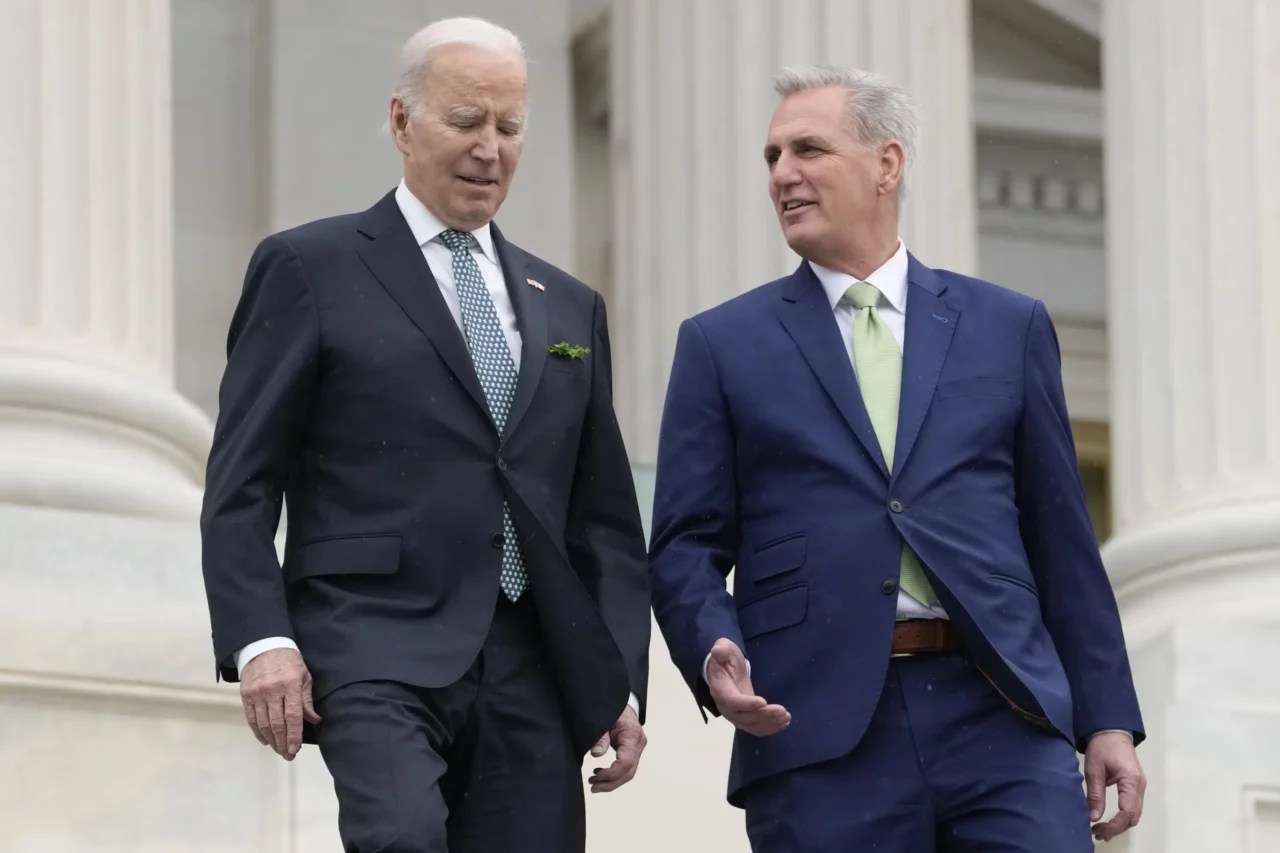
One outcome is clear as Washington reaches for a budget deal to end the debt ceiling standoff: The ambitious COVID-19 era of government spending to cope with the pandemic and rebuild in its aftermath is giving way to a new fiscal focus on tailored investments and stemming deficits.
President Joe Biden has said recouping unspent coronavirus money is “on the table” in budget talks with Congress. While the White House has threatened to veto Republican House Speaker Kevin McCarthy’s debt ceiling bill with its “devastating cuts” to federal programs, the administration has signaled a willingness to consider other budget caps.
The end result is a turnaround from just a few years ago, when Congress passed and then-president Donald Trump signed the historic $2.2 trillion CARES Act at the start of the public health crisis in 2020. It’s a dramatic realignment even as Biden’s bipartisan infrastructure law and Inflation Reduction Act are now investing billions of dollars into paving streets, shoring up the federal safety net and restructuring the U.S. economy.
The Treasury Department has warned it will begin running out of money to pay the nation’s bills as soon as June 1, though an estimate Friday by the nonpartisan Congressional Budget office put the deadline at the first two weeks of June, potentially buying the negotiators time.
The contours of an agreement between the White House and Congress are within reach even if the political will to end the standoff is uncertain. Negotiators are considering clawing back some $30 billion in unused COVID-19 funds, imposing spending caps over the next several years and approving permitting reforms to ease construction of energy projects and other developments, according to those familiar with the closed-door staff discussions. They were not authorized to discuss the private deliberations and spoke on condition of anonymity.
The nation’s debt load has ballooned in recent years to $31 trillion. That’s virtually double what it was during the last major debt ceiling showdown a decade ago, when Biden, as vice president to President Barack Obama, faced the new class of tea party Republicans demanding spending cuts in exchange for raising the debt limit.
While the politics of the debt limit have intensified, the nation’s debt is nothing new. The U.S. balance sheets have been operating in the red for much of its history, dating to before the Civil War. That’s because government expenditures are routinely more than tax revenues, helping to subsidize the comforts Americans depend on — national security, public works, a federal safety net and basic operations to keep a civil society running. In the U.S., individuals pay the bulk of the taxes, while corporations pay less than 10%.
Much of the COVID-19 spending approved at the start of the pandemic has run its course and government spending is back to its typical levels, experts said. That includes the free vaccines, small business payroll funds, emergency payments to individuals, monthly child tax credits and supplemental food aid that protected Americans and the economy.



2 comments
gloriajame
May 13, 2023 at 2:05 pm
Outstanding work, Mike. I applaud your efforts since I currently make more than $36,000 every month from just one straightforward web business. Even though these are the most fundamental internet operations tasks, you may start bs-12 making a respectable online income with as little as $29,000.
.
.
Modify your connection————————————>>> earncash76.blogspot.com
Billy the Bamboozler
May 13, 2023 at 3:44 pm
If they were pushing for less spending AND higher taxes then I could believe it was about the debt. Otherwise, safe to assume Republicans just bought and paid for by the rich to sabotage and obstruct government on behalf of the rich… shovel as much money as humanly possible to the rich is the only function of this political party. The culture war is just to distract and hypnotize the sub-apes…get them to vote against their own interests.
Comments are closed.